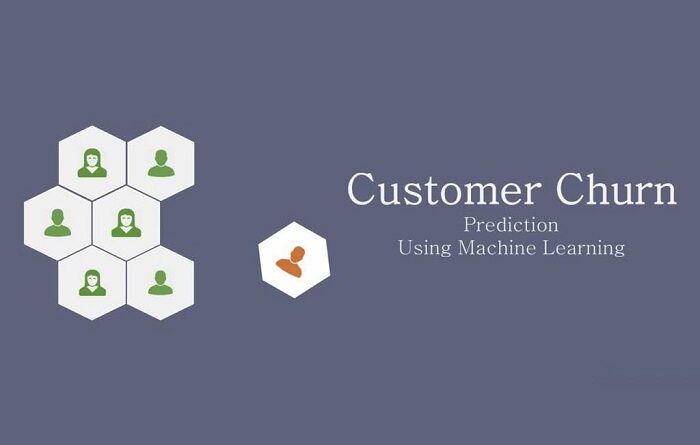Customer Churn Based on Machine Learning Technique
Machine-learning algorithms predict the churn prediction of the customer based on higher performance. Customer churn is one of the challenges big companies face as it directly affects the company’s revenue. As a result, companies are looking to work toward creating the customer churn model with the help of predictive analytics in marketing.
Customer churn is a big problem big companies face. Even potentially big customers can turn opposite when they leave their respective platforms of choice. That results in the company losing a great deal of money in terms of sales and resources spent on that customer. It’s common to see companies take help from predictive analytics to solve such problems.
Customer churning largely affects the business, mostly in the telecommunication sector, as this is the only sector that focuses on returning existing customers.
Customer service and the support system are the main reasons for customer churn. So when the companies focus on getting a forecast on the customer churning, it works towards helping companies to deal with the problem of the customer churn.
By using machine learning techniques, you can analyze the characteristics of the customer with the help of datasets like the billing information, account information and call details.
What do you mean by customer churn?
Customer churn is the percentage of customers who stop using a product or service in a particular period. The churn rate is often used to indicate customer satisfaction and loyalty.
Customer churn can get calculated by dividing the number of customers left during an interval by the total number of customers at the beginning. For example, if there were 100 customers at the beginning of an interval and 10 customers left during that time frame, then 10% would be considered an acceptable customer churn rate.
The customer churn rate can get calculated by dividing the number of customers lost during an interval by the total number of accounts at the beginning of that interval, where an account is defined as being active for at least one month since its creation date or activation date (depending on how you want to define it).
Many companies use their customer churn rates as indicators when they need to evaluate their marketing campaigns and sales strategies.
Effect of customer churn on the business
The effect of customer churn on the business is that it leads to a loss of revenue. It is very important to know that even a small percentage of churn must not go unnoticed, as that small amount of churn can compound very fast. For example, if the company has a monthly churn of 2 per cent, that can become around 24 per cent yearly. That is why Machine-learning algorithms can predict churn prediction much more accurately for any business.
Another thing is that if you look at your customer base and see that they are all coming from one country or region, then you might have to look at other factors like cultural differences and language barriers before you start looking at what exactly is causing them to leave your platform or service.
Focus on solving the problem
A recent study has revealed that companies with good customer support services have a greater chance of getting more customers. The same is true for businesses that use social media for marketing and customer care.
It is seen that companies that constantly keep a check of how well the people will engage with the products and ask the clients to give their feedback and also focus on solving their issues have more opportunities to help in maintaining quality relationships with clients.
The main reason behind this is that when a company takes care of its customers, the clients feel appreciated. That encourages them to buy more from the company, which helps increase revenue.
The survey also found that over 80% of consumers want to interact with brands online and be able to reach out to them whenever they want to do so. That means that if your business does not provide an online platform where customers can talk about their problems, you are losing out on potential sales and loyal customers who would love to recommend your brand again and again!
Take the measures in advance
The main aim of predictive analytics is to find the customers likely to churn and then take appropriate steps to retain them. It can help discover the customers who are no longer part of your business and have already left. In addition, it also shows the behaviour patterns of some customers who are no longer part of the company and have already left.
You can use machine learning algorithms to find potential churners to get the best result. In addition, it will show the behaviour patterns of some customers who are no longer part of the company and have already left. Also, businesses can take the help of predictive analytics in marketing to understand the behaviour of customers.
Predictive analytics can help you know your customers better by helping you make better decisions based on past data rather than just relying on instinct or gut feeling. In addition, it gives you an advantage over your competitors because they don’t have this information at their fingertips!
Getting the prediction of customer churn with ML
For any task related to machine learning, the data specialist require a good amount of data to work with. So first, researchers work on finding the type of data they will require based on the goal. Then the data gets ready, preprocessed and then transformed into a type of form suitable to help build the model using machine learning.
The most important thing is to get this right. That is because if your dataset has too many variables or not enough, it will be difficult to get a good result. So the aim here is to get a balanced dataset with enough variables that can be used as predictors but not too much.
The predictors are selected based on their ability to explain the results using statistics such as correlation and regression analysis (Tian & Yu, 2017). These two methods help in selecting the best predictors for churn prediction models.
The final step involves developing an algorithm for predicting customer churn based on historical data from customers who have already left the company due to poor performance or other reasons (Sahoo et al., 2016).
Conclusion
The Machine-learning algorithms predict the churn prediction and can be very useful in today’s business environment. Big companies are looking into it or most likely started using this approach a long time ago. It helps them figure out who will churn out, what factors affect the most, and how to predict if a particular customer will leave soon. Moreover, the fact that it can get achieved with relative accuracy makes it something every company should have.



